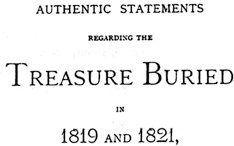A friend recently had a good old moan about being given directions that involved “turning right at the pub that isn’t there any more“. Just about as good a definition of what’s wrong with the world these days: perhaps we should just be grateful that our political masters haven’t found a way to privatize the roads. Errr, yet.
Hence we perhaps ought to celebrate the constancy of something that has stayed the same now for well over sixty years: the continued unknownness of The Unknown Man found on a South Australian beach on 1st December 1948, AKA the “Tamam Shud” cipher mystery. If only more things stayed the same, straws swaying lithely against the winds of modernity, eh?
All the same, the recent claim that The Unknown Man was in fact a certain “H. C. Reynolds” continues to intrigue me: I just wish there was a way to work out if this was true or not. We’ve managed to establish a solid timeline for Reynolds’ work as a young merchant seaman in and around Hobart in 1917-1919, and also to glean a few meagre facts: that he was born in Hobart on 8th Feb 1900, and that his middle name was Charles. Pretty much everything else on the pages of his personal history remains unseen to us.
Frustratingly, he was almost certainly not Horace Charles Reynolds, a lifelong poultry farmer born on the 12th February 1900 near Hobart: so much for Ancestry.com searches, hohum! 😉
A few months back, Diane O’Donovan very generously went to look at the logbooks of the RMS Niagara (a ship our HCR briefly worked on), but sadly found nothing useful… Then again, it was a particularly big ship, on which HCR only worked one round trip to Canada via Hawaii (where the ID card almost certainly came from), so perhaps a negative result shouldn’t come as a great surprise.
All of which left (according to the Log of Logs) one last set of log books to examine: and so the intrepid John Kozak stepped forward to make a journey into the sweeping suburban jungle surrounding Sydney, to track down the SS Koonya’s log books in the Kingswood reading room.
Unfortunately, it seems that even though these contain plenty of references to HCR (in the forms “Charles”, “Chas”, “H Charles” and (most commonly) “H Chas”, says John) in the log books, that is precisely as far as they go. No first name, no passing detail to try to tie to the real world, no nothing. Even though I’m really pleased that John managed to get his much-sought-after pineapple doughnuts from the cafeteria van outside the archive, as far as The Unknown Man goes it would seem as though we’re now stuck.
Is this The End? Well… mostly, although there are a few (albeit silkily fine) threads left dangling, and (as always) any one of them might possibly yield something (after all, it’s not as if we know nothing at all about HCR). He landed a job as a purser at a young age, so he must have done well at school, surely? So, here is my collection of HCR’s-school-related archival musings, perhaps one of them will point to where we should look to find HCR getting his exam results in (I guess) 1917.,,
(1) The (possible) Waratah connection. A 26th January 1918 newspaper tea-company advertorial refers to a certain “Master H Reynolds” of the mining town of Waratah. It’s a wafer thin lead, sure, but might this be our HCR? Unfortunately, a helpful lady from the Waratah Museum Society told me that “Waratah was very prone to buildings catching fire”, particularly ones with archives in, it would seem. So it’s far from clear how to follow this up. 🙁
(2) Cheryl Bearden points to the possibility (from crew manifests) that Reynolds had a younger brother (born ~1901) with first initial M. I wondered whether this might have been Maurice Reynolds (a reasonably well-known boxer, wrestler & occasional film-star), and so tracked his life back to Hutchins School in Hobart. However, according to Margaret Mason-Cox at Hutchins (who very kindly looked this up for me):-
According to the Hutchins Roll of Scholars, Maurice Davies Reynolds, born 4 July 1907, entered Hutchins 27 July 1921, no. 2507. He was the son of W B Reynolds, of ‘Hope Vale’, Mangalore, and was a boarder. He had two older brothers who attended Hutchins: Francis Lawrence (born 1901, entered 1916) and William Thomas Reynolds (born 1903, entered 1917).
As far as I can tell, they were not related to Herbert Francis Reynolds (born 1901, entered Hutchins 1910), whose father was F Reynolds, of Montpelier Road, Hobart.
Another dead end, but which at least serves to eliminate one school from our enquiries. 🙂
(3) Cheryl Bearden noted a while back that “a C. Reynolds appeared on the 1915 roster for the Junior Derwent Football team, [so] the school he [C. Reynolds] attended is probably in the Derwent area of Hobart“… but whether the H C Reynolds had already taken to calling himself C Reynolds in 1915 remains conjectural.
(4) In an email to me, “X Lamb” (the lady who originally had the HCR id card) mentioned some kind of odd family mythology around “Virgillians” (presumably St. Virgils School in Hobart, founded 1911, which would potentially make HCR one of its very first pupils) which may or indeed may not be connected to HCR. Don’t really know what to make of this, but thought I ought to mention it anyway. 🙂
Regardless, it would seem that this barely known young man remains resolutely untraceable, and his status as a possible Unknown Man candidate continues to be unknown, leaving the whole mystery as murky as ever. Rejoice in its constancy! 🙂
